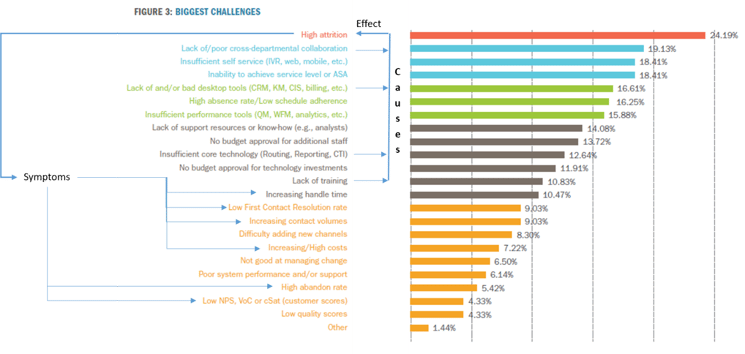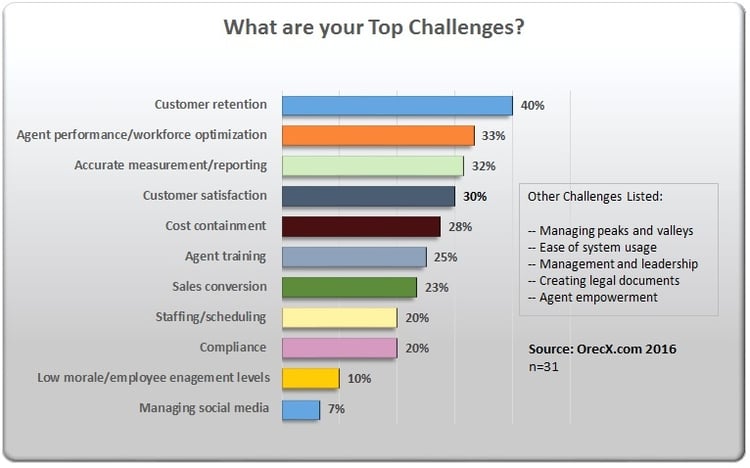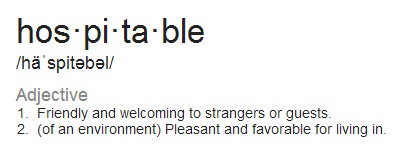By Scott Bakken, CEO, MainTrax; and Chris Lawson, Managing Partner, Lawson Concepts
This article appeared previously in the June edition of Contact Center Pipeline.
How Speech Analytics Can Help You Retain Agents and Boost Profits
Baptism by fire. That pretty much sums up the experience of new contact center agents. From day one, agents are expected to understand a wide array of products and services. They’re asked to produce measurable results in an increasingly diverse market, all with little guidance.
The pressure is even greater for contact center managers tasked with keeping frustrated agents from yanking off their headsets and heading for the nearest exit. Despite managers’ best efforts, a high percentage of agents don’t even last 90 days on the job.
In early 2016, a special report published by Strategic Contact titled Contact Center Challenges & Priorities, revealed that more than 24 percent of survey respondents ranked agent attrition as their top challenge. In a related blog post, the company noted that “attrition is an age-old problem in contact centers and may be getting worse as the economy improves and the unemployment rate goes down.”
Cause and Effect
Before you can reduce attrition you first have to understand what causes it. Clearly, lack of agent knowledge and training are primary contributors. Consider what a new hire has to contend with:
- Digging through the information landfill
With corporate information piling up every year, contact center agents struggle to keep up. In our speech analytics work, we’ve come across PATs (panicked agent timeouts) in hundreds of call screen recordings — either there’s a long silence on the part of the agent or the caller is placed on hold while the agent searches frantically for a particular document in the “information landfill.”
Agents are typically expected to memorize where a number of documents that can answer customer inquiries and solve problems are stored. If the question is A, then search on this web site. If the question is B, try searching the SharePoint site. If you don’t find it there, search the shared network folders. Add an avalanche of emails from the operations staff into the mix, and you end up with an epidemic of information overload that’s crippling contact centers.
- Saddled with outdated technology and applications
Contact centers often run as many as seven agent desktop applications simultaneously. A number of centers deploy 20 or more applications. Many of these applications are run on legacy systems that were developed more than 30 years ago in a vastly different transaction-based world, whereas today’s environment calls for event-driven applications.
These systems continue to run but haven’t kept up with a high-speed environment. The cost to make significant interface changes can be staggering, so many centers just learn to live with inefficient, out-of-date systems. Settling for old technology comes with a significant cost — it takes a toll on agents, which negatively impacts the customer experience.
- Excessive amount of mouse clicks
An average mouse click is approximately 225 milliseconds, but those quarter-of-a-second clicks adds up quickly. Plus, it creates a substantial amount of frustration and both physical and mental fatigue for agents who must perform the same procedure or transaction over and over.
A recent discovery session with a financial services client revealed that agents were navigating a 14-page procedural document containing about 1,000 words of text. All the necessary scrolling and switching of apps took an average of 50 clicks.
Helping the client streamline the process with the aid of guided navigation enabled them to reduce the procedure to two pages and the mouse clicks to 14, a savings of nine seconds in mouse clicks. The clients AHT for this call type dropped from 15 minutes to a little over three minutes. That adds up to countless hours saved each and every day, but there’s room for improvement.
Deer in the Headlights
Is it any wonder why new agents often look like a deer in the headlights? Compounding the problem, many new agents – those who are well qualified as well as those who aren’t -- are often rushed through a training process, leaving them to figure out their own best approach to helping customers.
No wonder so many contact centers have virtual revolving doors! Some organizations tell us they deal with annual agent churn rates in the 40 percent range. The tragedy is that many agents who quit are diamonds in the rough who simply needed more guidance. It’s one thing to be put into a live situation without enough training; it’s another thing to feel like you’re stranded on an information-deprived island, cut off from quick and meaningful feedback.
The Impact of High Attrition
The impact of agent attrition, often exacerbated by a lack of quality training and tools, ripples across the contact center, going far beyond the obvious costs of recruiting, hiring and training (up to 30 percent of salary in some cases). As Strategic Contact’s special report notes, “The top challenge of attrition stands out, and the top priorities of performance management/coaching and training align to help tackle that issue.”
We’ve applied our perspective to Strategic Contact’s survey results on challenges (See Figure 1) to identify some attrition symptoms like low first-call resolution, increased call volumes, high abandon rates and low performance scores. These symptoms will almost surely lead to even more critical outcomes like customer churn.

Chart courtesy of Strategic Contact
The results of this survey support what we’ve observed during our years of activity in the industry. It’s astonishing how often organizations do nothing to alleviate significant issues.
Executives need to justify the barriers that keep them from addressing these challenges. They may cite a lack of budget, but that’s difficult to rationalize when a $100,000 investment could save millions.
Reducing Agent Attrition with Speech Analytics
Are agents getting the coaching and training they need to feel confident in their abilities to resolve customers’ issues? Are they provided with the proper knowledge necessary to handle customers effectively? If they’re authorized to make modest script modifications or slightly modify customer handling techniques, how can they use analytics to monitor the results?
Lack of training and lack of knowledge will show up in a wide range of early warning signs. Speech analytics can identify high-value agent tweaks with quick performance results whether you’re coaching quality agents or identifying agents that aren’t a good fit.
Either way, pinpointing agent knowledge gaps and problematic behavior paves the way for coaching opportunities to improve performance, productivity and call-handling strategies. Everybody wins.
There’s no better time to begin analyzing a new agent’s performance than day one. Fortunately, speech analytics makes it possible to analyze all of a new agent’s interactions rather than just spot-checking as time allows.
The key is focusing on specific issues that will make the agent more productive and help resolve matters more efficiently, which eases the burden placed on new agents. Newbies are likely to achieve far greater job satisfaction when they receive quick, productive feedback. Without it, they’re fumbling in the dark.
Here’s a sampling of agent issues that can be monitored by speech analytics. Insights gained will help identify which agents needs extra target training and which might benefit from positive reinforcement. Layering on patterns and combinations of phrases spoken by the customer helps speech analytics deliver even greater context and value.
Exposing an agent’s inability to solve a customer’s request.
Identifying calls in which customers express frustration with a new agent.
Phrases often uttered near the end of a call that suggest the customer’s issue went unanswered.
Identifying slang phrases that may be construed as disrespectful.
Phrases uttered by agents who are prone to defer issues rather than owning a situation.
Our research shows that agent empathy and a willingness to help can temper the most volatile situation. Praising these agents will go a long way toward retaining them.
A lack of empathy — revealed by evidence that an agent may be confrontational — can be a quick indicator of an agent who might not be a good fit for the organization.
Depending upon the type of contact center, an agent’s reactions and behavior may provide clues that they’re not a good fit for the job.
The High Cost of Silence
Organizations like to think of customer experience in their contact centers as a “linear point A to point B” transaction — but it rarely happens that way because of a multitude of variables.
No matter how you envisioned and designed the contact center customer experience, whatever the agent delivers becomes your true customer experience. And when an agent has to place the customer on hold to navigate a “spaghetti path” — toggle between multiple applications, search for information, call a supervisor for help, review data in a spreadsheet — the customer experience is inevitably eroded.
High effort by agents to complete customer inquiries or transactions due to poor desktop performance directly translates into high customer effort. Contact centers can no longer afford to live with poor tools and “spaghetti agent paths” because silence is as costly as it is deadly.
How can you decipher what’s going on while silence reigns so you can reduce the resulting costs? Two words: speech analytics. Many speech platforms provide insight to silence contained within calls — that is, agent silence. Customers focused on getting their issue resolved do most of the talking. But what’s not being said by your agents is just as important to both the enterprise and the customer.
Analytics layered onto audio and screen recordings can reveal how forcing customers to endure the “sounds of silence” for interminable lengths of time impacts the organization in a number of ways.
For starters, agent silence is not only killing your customer experience, it’s also sending your operational costs soaring and pummeling your performance metrics in AHT, FCR and cost per call.
What’s more, all that “dead air” time on the phone significantly contributes to employee attrition and all the associated costs for screening new employees, hiring, onboarding and training. How? Agents who are constantly scrambling to find information in inefficient and outdated systems can get frustrated and burn out quickly. High turnover becomes the norm.
Besides the hard costs, poor agent morale and fatigue takes its toll in other, more subtle ways. Watching their coworkers disappear one by one exacerbates poor morale and anxiety in remaining agents, who give up hope that circumstances will ever improve. As morale plunges, performance suffers.
All these factors point to one inescapable conclusion: there are significant savings to be reaped by using speech analytics to understand the total impact of agent silence.
The voiceprint shown in Figure 1 illustrates a typical customer service interaction with the sine wave clearly showing interaction between customer and agent.
 Figure 1 Typical agent/customer interaction voiceprint
Figure 1 Typical agent/customer interaction voiceprint
The underlying speech analytics can provide insight into what’s transpiring in the conversation. But let’s compare this voiceprint with the one shown in Figure 2 of another customer interaction.
This call was 6 minutes and 40 seconds in length, but 28 percent of the phone call was silence on the agent’s part. Those four periods of silence equate to roughly 112 seconds for the customer to be on hold or hearing the agent tapping away on a keyboard. Let’s say your AHT is five minutes with a cost per call of $5. If this scenario is occurring on an ultra-conservative 3 percent of 25 million calls annually, you spent an additional $1.25 million for your customers to hear nothing.
eSAT
Employee satisfaction measurements reflect the culture of your contact center. Understanding your new agents’ attitudes will help you understand their motives and ease their assimilation in even the most high-speed operational environment.
Of course, hiring the right people is the best formula for success. By tracking new hire performance, a business can improve its ongoing recruitment process and reduce early attrition. We’ve been told many times that employing empathetic agents is a great start. Analytics can quickly identify uncompassionate agents who may have slipped through the hiring process before their probationary period ends. At the same time, the personality traits of talented agents can be relayed to the recruiting department, enabling recruiters to identify future candidates who are most likely to succeed.
Understanding what agents are saying in their first days on the job can be a great way to retain the best people and cut your losses early. One executive told us that with today’s Human Resource challenges, the only way he can cut agents loose is if they steal something. We told him that speech analytics would help him find other plausible reasons for firing someone instead of banking on self-selection. It’s hard to dispute a case when you’ve got tangible evidence staring you in the face.
When you use speech tools to monitor your agents early on, the payback can be staggering. Strategic Contact’s compelling research clearly shows the extent of the agent attrition problem. Don’t perpetuate the cycle. Speech can help you build out an agent retention program that leads to more satisfied agents, happier customers and a much healthier bottom line.
My Agent Said What??
Believe it or not, the following statements were actually uttered by agents. You can look forward to more nuggets of agent bloopers at the end of every MainTrax column.
- “Let me speak with a supervisor before my drugs kick in.”
- "The policy is on our website somewhere. If you don't like it, call corporate."
- “My name is spelled with an ‘L’ as in Led Zeppelin.”
About MainTrax
MainTrax is a leading provider of speech analytics managed services to end users and industry partners. Free of allegiance to any one solution or supplier, MainTrax has earned a reputation as an independent, unbiased resource for consulting expertise across a variety of products and providers.
About Lawson Concepts
Lawson Concepts focuses on improving the agent experience and helping contact centers understand their struggles to harness information. Through market-leading technology solutions and services for contact centers and back-office, centers are able to reduce agent fatigue and streamline customer-agent interaction.












 For many customers, their first encounter with a hospitality enterprise is over the phone, through a call center. These call centers handle everything from family vacation reservations and inquiries to group sales and conference scheduling for multinational companies. For these call centers, two metrics are especially important:
For many customers, their first encounter with a hospitality enterprise is over the phone, through a call center. These call centers handle everything from family vacation reservations and inquiries to group sales and conference scheduling for multinational companies. For these call centers, two metrics are especially important:

 Figure 1 Typical agent/customer interaction voiceprint
Figure 1 Typical agent/customer interaction voiceprint